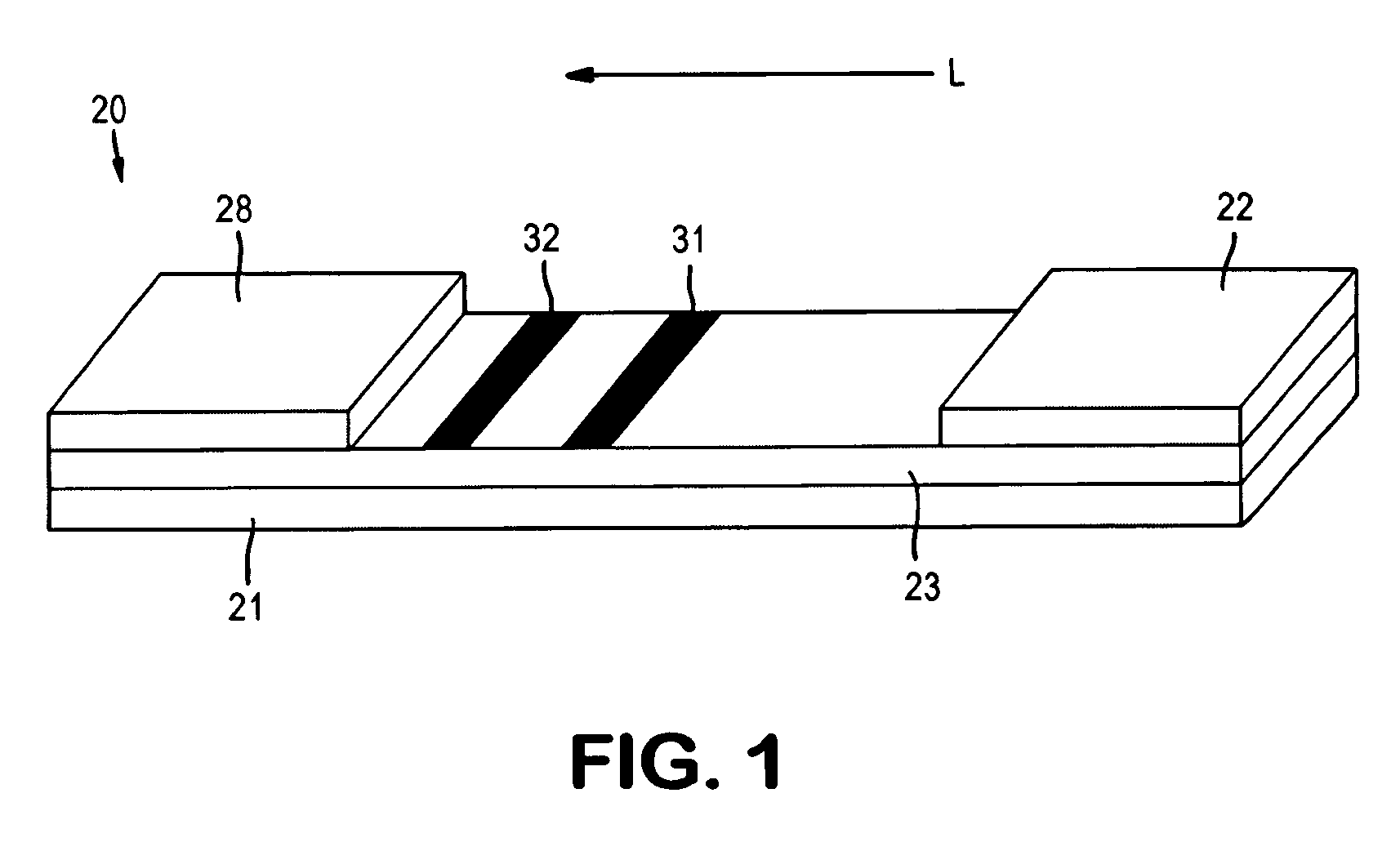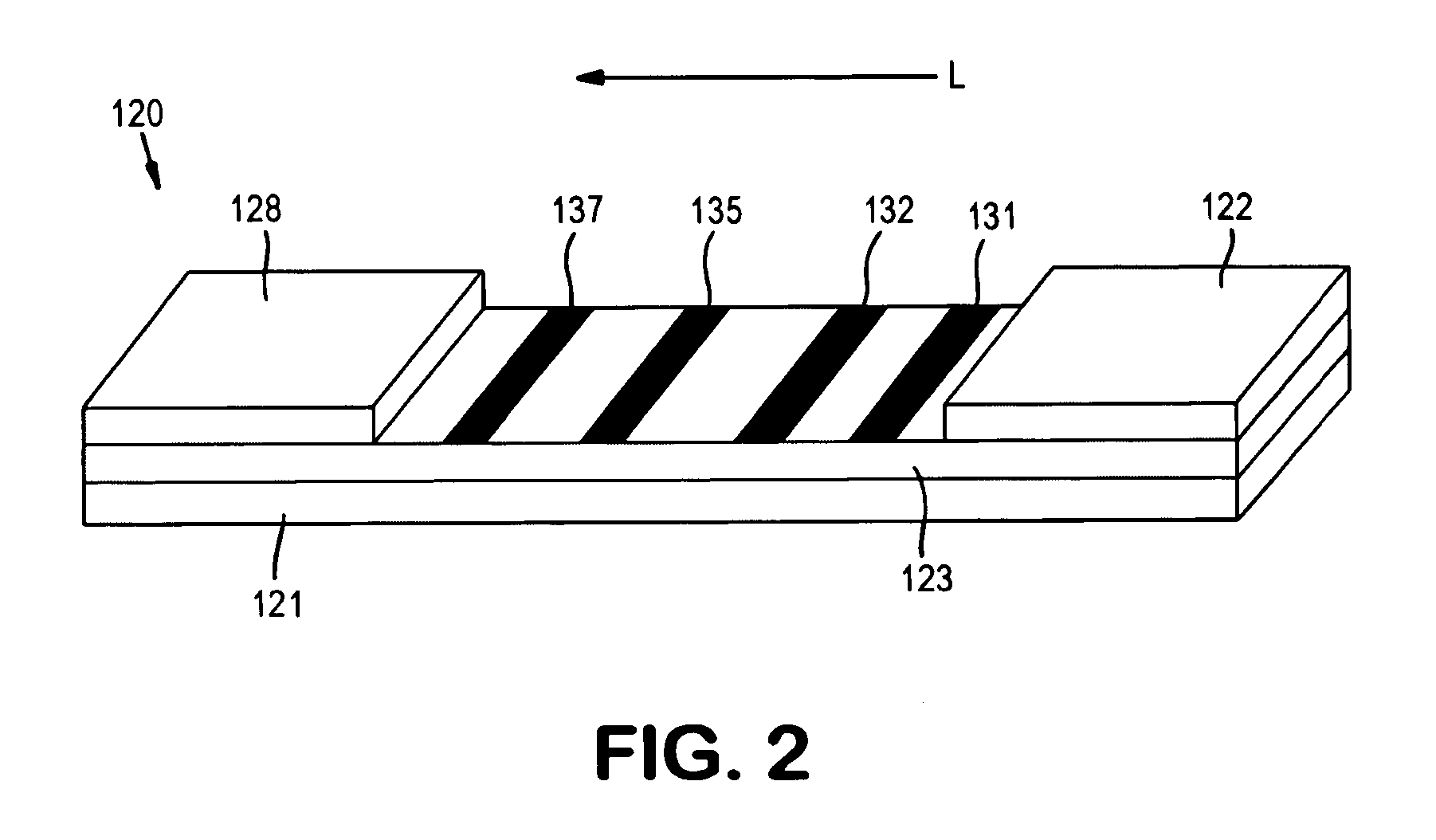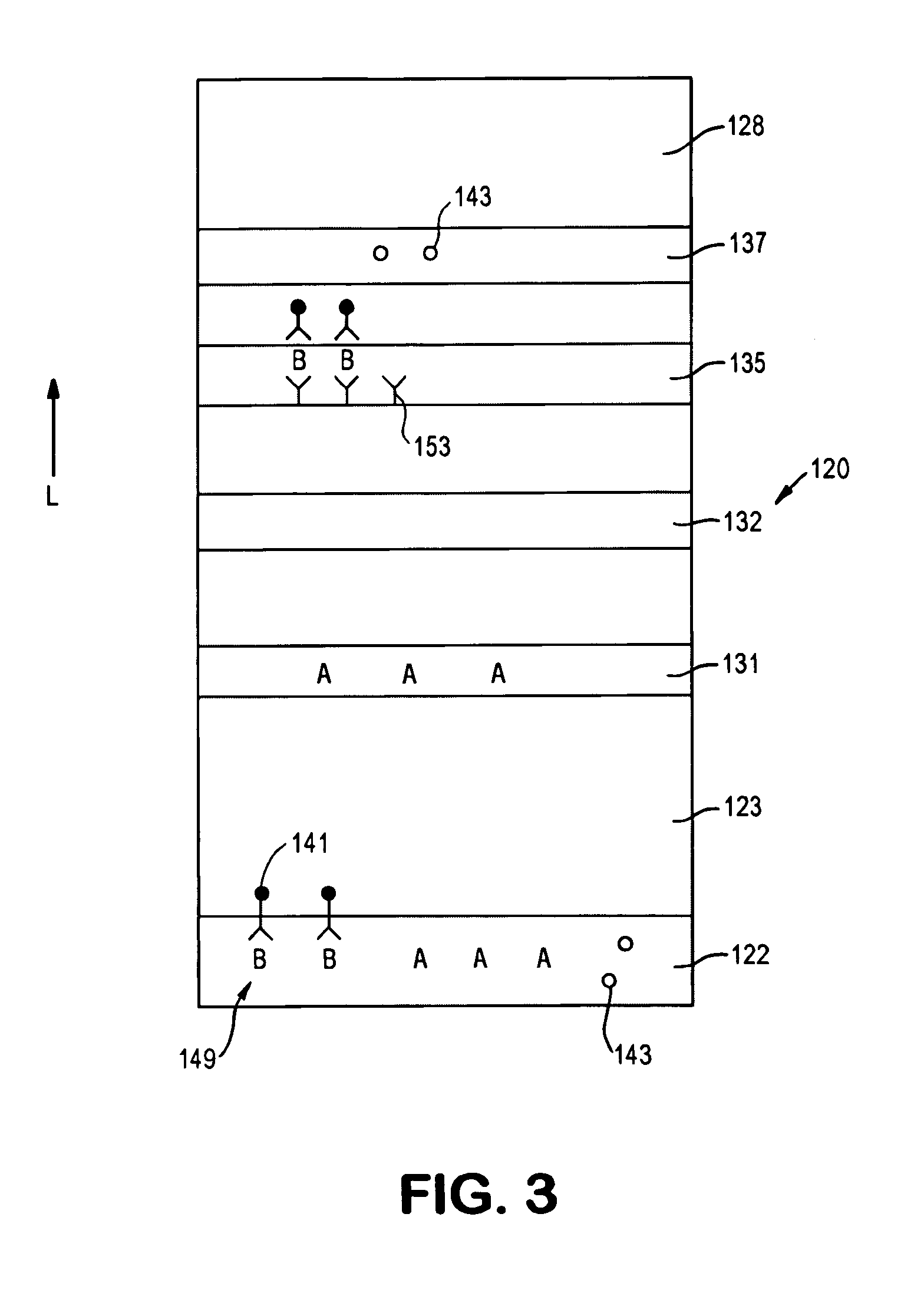Assay devices utilizing chemichromic dyes
a technology of chemichromic dye and assay device, which is applied in the field of assay device utilizing chemichromic dye, can solve the problems of elevated ph, complicated and slow conventional techniques for confirming the presence of “clue cells”, and often misleading conventional techniques for detecting elevated ph levels
- Summary
- Abstract
- Description
- Claims
- Application Information
AI Technical Summary
Benefits of technology
Problems solved by technology
Method used
Image
Examples
example 1
[0066] The ability of alpha-naphtholbenzein to indicate the presence of an amine was demonstrated. 50-microliter solutions were provided that contained varying concentrations of putrescine (Sigma-Aldrich Chemical Company of Milwaukee, Wis., USA, 99% pure) in acetonitrile, i.e., 0.0, 0.15, 0.30, 0.60, 1.25, 2.50, 5.00, and 10.00 milligrams of putrescine per milliliter (which corresponds to 0; 37.5; 75; 150; 300; 600; 1,200; and 2,400 ppm, respectively). These solutions were placed in a microtiter plate well and mixed with 150 microliters of a solution containing alpha-naphtholbenzein (Sigma-Aldrich Chemical Company) in acetonitrile. Three (3) alpha-naphtholbenzein concentrations were tested, i.e., 0.01, 0.05, and 0.10 milligrams per milliliter. Upon mixing, the wells were then incubated at room temperature for less than 1 minute. Absorbance readings were then measured at a wavelength of 650 nanometers using a microplate reader from Dynex Technologies of Chantilly, Virginia (Model # M...
example 2
[0067] The ability of alpha-naphtholbenzein to indicate the presence of an amine was demonstrated. 50-microliter solutions were provided that contained varying concentrations of cadaverine (Sigma-Aldrich Chemical Company of Milwaukee, Wis., USA, 95% pure) in acetonitrile, i.e., 0.0, 0.15, 0.30, 0.60, 1.25, 2.50, 5.00, and 10.00 milligrams of cadaverine per milliliter (which corresponds to 0; 37.5; 75; 150; 300; 600; 1,200; and 2,400 ppm, respectively). These solutions were placed in a microtiter plate well and mixed with 150 microliters of a solution containing alpha-naphtholbenzein (Sigma-Aldrich Chemical Company) in acetonitrile. Three (3) alpha-naphtholbenzein concentrations were tested, i.e., 0.01, 0.05, and 0.10 milligrams per milliliter. Upon mixing, the wells were then incubated at room temperature for less than 1 minute. Absorbance readings were then measured at a wavelength of 650 nanometers using a microplate reader from Dynex Technologies of Chantilly, Virginia (Model # M...
example 3
[0068] The ability of alpha-naphtholbenzein to indicate the presence of an amine was demonstrated. 50-microliter solutions were provided that contained varying concentrations of trimethylamine (Sigma-Aldrich Chemical Company of Milwaukee, Wis., USA, 40 wt. %) in water, i.e., 0.00, 0.25, 0.50, 1.00, 2.00, 4.00, 8,00, and 16.00 milligrams of trimethylamine per milliliter (which corresponds to 0; 12.5; 25; 50; 100; 200; 400; and 800 ppm, respectively). These solutions were placed in a microtiter plate well and mixed with 150 microliters of a solution containing alpha-naphtholbenzein (Sigma-Aldrich Chemical Company) in acetonitrile. Three (3) alpha-naphtholbenzein concentrations were tested, i.e., 0.01, 0.05, and 0.10 milligrams per milliliter. Upon mixing, the wells were then incubated at room temperature for less than 1 minute. Absorbance readings were then measured at a wavelength of 650 nanometers using a microplate reader from Dynex Technologies of Chantilly, Virginia (Model # MRX)...
PUM
 Login to View More
Login to View More Abstract
Description
Claims
Application Information
 Login to View More
Login to View More - R&D
- Intellectual Property
- Life Sciences
- Materials
- Tech Scout
- Unparalleled Data Quality
- Higher Quality Content
- 60% Fewer Hallucinations
Browse by: Latest US Patents, China's latest patents, Technical Efficacy Thesaurus, Application Domain, Technology Topic, Popular Technical Reports.
© 2025 PatSnap. All rights reserved.Legal|Privacy policy|Modern Slavery Act Transparency Statement|Sitemap|About US| Contact US: help@patsnap.com



